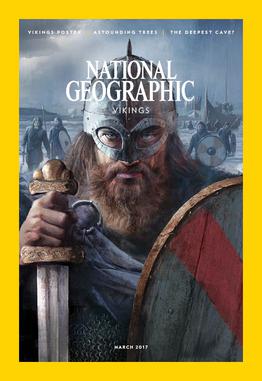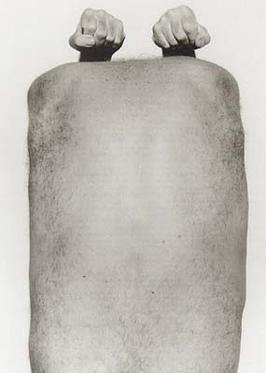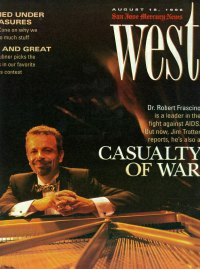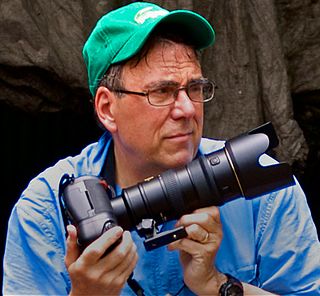
National Geographic is an American monthly magazine published by National Geographic Partners. The magazine was founded in 1888 as a scholarly journal, nine months after the establishment of the society, but is now a popular magazine. In 1905, it began including pictures, a style for which it became well-known. Its first color photos appeared in the 1910s. During the Cold War, the magazine committed itself to present a balanced view of the physical and human geography of countries beyond the Iron Curtain. Later, the magazine became outspoken on environmental issues.

Ernst Haas was an Austrian-American photojournalist and color photographer. During his 40-year career, Haas bridged the gap between photojournalism and the use of photography as a medium for expression and creativity. In addition to his coverage of events around the globe after World War II, Haas was an early innovator in color photography. His images were disseminated by magazines like Life and Vogue and, in 1962, were the subject of the first single-artist exhibition of color photography at New York's Museum of Modern Art. He served as president of the cooperative Magnum Photos, and his book The Creation (1971) was one of the most successful photography books ever, selling 350,000 copies.

David Hume Kennerly is an American photographer. He won the 1972 Pulitzer Prize for Feature Photography for his portfolio of photographs of the Vietnam War, Cambodia, East Pakistani refugees near Calcutta, and the Ali-Frazier fight in Madison Square Garden. He has photographed every American president since Lyndon B Johnson. He is the first presidential scholar at the University of Arizona.

John Rivers Coplans was a British artist, art writer, curator, and museum director. A veteran of World War II and a photographer, he emigrated to the United States in 1960 and had many exhibitions in Europe and North America. He was on the founding editorial staff of Artforum from 1962 to 1971, and was Editor-in-Chief from 1972 to 1977.

Esther Bubley was an American photographer who specialized in expressive photos of ordinary people in everyday lives. She worked for several agencies of the American government and her work also featured in several news and photographic magazines.

Art Wolfe is an American photographer and conservationist, best known for color images of landscapes, wildlife, and native cultures. His photographs document scenes from every continent and hundreds of locations, and have been noted by environmental advocacy groups for their "stunning" visual impact.

Aaron Huey is an American photographer, explorer, activist, and storyteller. He is known for his work as a photographer with National Geographic, for whom he has shot many magazine features on a diverse array of subjects from adventure, to war, to wildlife. Aaron is the founder of the Amplifier Foundation, a design lab that builds art to amplify the voices of grassroots movements. He was the architect and design director for the non-profit art project “We The People,” that flooded the streets of Donald Trump’s Inauguration and the International Women's March in 2017.

Henry Wolf was an Austrian-born, American graphic designer, photographer and art director. He influenced and energized magazine design during the 1950s and 1960s with his bold layouts, elegant typography, and whimsical cover photographs while serving as art director at Esquire, Bazaar, and Show magazines. Wolf opened his own photography studio, Henry Wolf Productions, in 1971, while also teaching magazine design and photography classes. In 1976, he was awarded the American Institute of Graphic Arts Medal for Lifetime Achievement and, in 1980, was inducted into the New York Art Directors Club Hall of Fame.
Vincent Laforet is a French-American director and photographer. Laforet shared the 2002 Pulitzer Prize for Feature Photography with four other photographers as a member of The New York Times staff's coverage of the post 9/11 events overseas that captured "the pain and the perseverance of people enduring protracted conflict in Afghanistan and Pakistan." In 2006, Laforet became the Times' s first national contract photographer. He has been sent on assignment by Vanity Fair, The New York Times Magazine, National Geographic, Sports Illustrated, Time, Newsweek, and Life. He is represented by the Stockland Martel agency.
James Pease Blair was an American photographer. His work has been published in National Geographic magazine and elsewhere.
Robert Glenn Ketchum is a pioneering conservation photographer, recognized by Audubon magazine as one of 100 people "who shaped the environmental movement in the 20th century.".
Nathan Lyons was an American photographer, curator, and educator. He exhibited his photographs from 1956 onwards, produced books of his own and edited those of others.
Jan W. Faul is a photographer who has developed and explored many styles professionally but has specialized in panoramic landscape photography with a focus on battlefields and the environment in Scotland's Highlands and Western Isles.

San Jose Mercury News West Magazine, also referred to as West and West Magazine, was a Sunday magazine published by San Jose Mercury News from 1982 to c. 1997. West Magazine received numerous awards and was recognized both for its articles and investigative journalism, as well as its art design.
Rich Clarkson is a Denver, Colorado based photographer who has a long history covering American sports. Rich owns a production company, Clarkson Creative, that specializes in photography, video production, design, and book publishing among other things. In addition, his company has organized the photography educational workshops, Summit Series of Photography Workshops, for over 30 years. The small group also handles all championship photography for the NCAA and Colorado Rockies baseball club.

Pete Muller is an American photographer, filmmaker, visual artist and professor based in New York City and Portland, Maine. His work focuses on masculinity, conflict and human ecology. He has won awards from World Press Photo, Pictures of the Year International, The Overseas Press Club and others. He is a current storytelling fellow at the National Geographic Society.

Ian Berry is a British photojournalist with Magnum Photos. He made his reputation in South Africa, where he worked for the Daily Mail and later for Drum magazine. He was the only photographer to document the massacre at Sharpeville in 1960, and his photographs were used in the trial to prove the victims' innocence. Ian Berry was also invited by Henri Cartier-Bresson to join Magnum Photos in 1962 when he was based in Paris; five years later he became a full member.

Sandra Eisert is an American photojournalist, now an art director and picture editor. In 1974 she became the first White House picture editor. Later she was named Picture Editor of the Year by the National Press Photographers Association in its annual competition. She contributed to 1989 earthquake coverage that won a Pulitzer Prize for the San Jose Mercury News. As of 2012, she has her own business providing strategic planning for startups.

Steve Raymer is an American photojournalist, author, and educator. A National Geographic staff photographer for over two decades, Raymer reported extensively on the Soviet Union and covered numerous conflicts and humanitarian crises in South and Southeast Asia. He served as director of the National Geographic Society News Service in Washington, D.C. from 1989 to 1995. Raymer is currently a Professor of Journalism at Indiana University.
A. J. Meek is an American photographer, teacher, and writer. Meek is known for his selenium toned silver gelatin contact prints made with an 8 x 20 banquet camera of landscapes in Louisiana and the American West and for images that are a balance between the documentary tradition and the fine arts.












